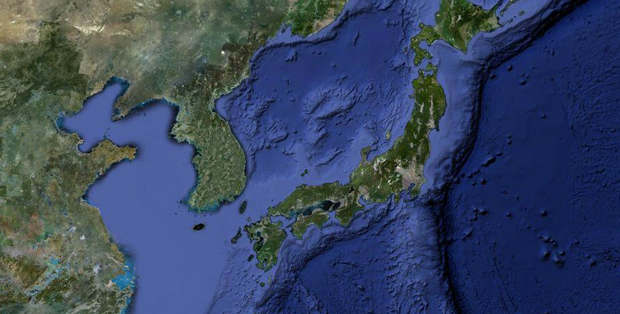How the Japan Earthquake Shortened Earth’s Day

The 8.9-magnitude earthquake in Japan on March 11 shortened Earth's day by 1.8 millionths of a second, according to NASA scientists. Earth still tilts on its axis by 23.5 degrees, as before. But, since the March 11 earthquake, Earth is spinning faster than before, and our day is ever so slightly shorter from sunrise to sunset.
This change is so small that sophisticated instruments cannot detect it. Instead, a team of scientists at NASA's Jet Propulsion Laboratory calculated the change in Earth's rate of spin, using computers and earthquake data.
EarthSky's Beth Lebwohl spoke to Richard S. Gross, the team's leader and a senior scientist at NASA's Jet Propulsion Laboratory. His group used seismic data showing the amount of slippage in the fault line necessary to create the Japan earthquake, in order to calculate the shift in mass inside Earth and subsequent change in Earth's rate of spin.
Imagine a spinning figure skater. As she moves her arms closer to her body, she spins faster. The Earth is similar to that. If the mass of the Earth moves closer to its rotation axis, the planet will spin faster.
Overall, Earth's axis of rotation is tilted at an angle of 23.5 degrees relative to the orbital plane at which Earth travels around the sun. This tilt causes our four seasons, and this tilt has not changed. What has changed is the orientation of the solid Earth with respect to our planet's tilt. In other words, the earthquake rearranged Earth's mass, bringing more mass a bit closer to the Earth's rotation axis, causing the Earth to rotate slightly faster and the length of the day to shorten. Says Gross:
This change doesn't effect the (degree) of tilt of the axis of Earth in space, or the orbit of the Earth around the sun. The only way Earth's tilt or orbit can be affected is if some external force -- like an asteroid -- hits the Earth. These are internal processes -- earthquakes or winds or currents. They can only change how the Earth's mass is balanced. The Earth is a big massive rotating body. Anything that is reasonable to happen is going to cause only a very small change. Earth really is a very stable system.
Gross told EarthSky that while a shift in Earth's axis and rotational speed might sound striking, perhaps even scary, Earth is shifting slightly all the time, owing mostly to atmospheric and ocean currents.
It's a perfectly natural motion of the Earth, and the biggest cause of this motion are changes in the atmospheric winds, and changes in the ocean currents. The winds and the currents carry a lot of energy with them, and that energy can be exchanged with the solid Earth to cause Earth's rotation to change.
If you were to stop the winds completely, Gross said, you would change the length of Earth's day by about 4 milliseconds. He added that other earthquakes have also shifted Earth's axis, for example, the February 2010 earthquake in Chile, and an even stronger earthquake in Chile in 1960.
The largest earthquake that has happened in Earth's recorded history was the 1960 earthquake in Chile. I did the same calculations for that earthquake (as for the 2011 Japan earthquake and 2010 Chile earthquake), and, according to my calculations, the 1960 earthquake should have shortened the length of the day by 8 microseconds.
He explained that his figures on the shifting caused by Japan's earthquake are preliminary. His team is still working on the calculations.
We're looking at the observations right now to see if these predicted effects are actually observable, but it will take some time for us to reduce the data--that is, to reduce the effects of the atmosphere and oceans--to see the much smaller effects caused by the earthquake. But if we're successful, this will be the first time that we'll see a verified effect of the earthquake on the Earth's rotation.
The magnitude-8.9 earthquake that struck northern Japan on Friday not only changed the balance of the planet and altered Earth's spin. It also moved the coastline of the island nation of Japan. Global positioning stations closest to the earthquake's epicenter jumped eastward by up to 13 feet. In the meantime, our day has gotten shorter by 1.8 millionths of a second.

No comments:
Post a Comment